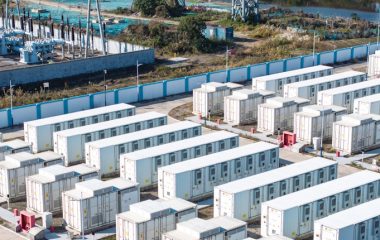
Photo: Dan Cristian / Pexels
The Golden Plains wind farm is planned to have 215 turbines and produce enough electricity for 765,000 homes. The planning minister gave the final approval, and the construction will start next year in the Australian state of Victoria. The project led by WestWind Energy is worth AUD 2 billion (EUR 1.28 billion).
The Golden Plains wind farm will cover 167 square kilometers, and it will reduce carbon dioxide emissions by an estimated 4.8 million tons per year. According to the project that received the final planning permit, the maximum height of the wind turbines is 230 meters, and the diameter of the turbine rotor has been increased from the originally planned 150 to 165 meters.
The location is in Rokewood, 130 kilometers west of Melbourne, and the wind farm will start building in the middle of next year.
Planning Minister of Victoria Richard Wynne approved planning permits for the final project proposal, and after years of preparation, Golden Plains is entering the construction phase.
Protection of local crane population
The final approval comes after a long legal battle with local farmers, who demanded the reduction of the number of turbines to 185, claiming that it would endanger the habitat of the brolga population, a species of crane that inhabits the area.
The remarks and changes in the project were related to the protection of the brolga population. To provide a new breeding ground for brolgas and meet the requirement to achieve zero net impact on the bird’s population, the choice of locations implies long and detailed research, which is difficult to complete within the given time frame, according to the planning permit amendments.
Therefore, the critics requested to change the relevant conditions of the permit and enable a longer and more detailed research process to find the most suitable locations, and which was approved by the minister.
According to the project plan, WestWind will pay at least AUD 1,000 a year to residents living within a two-mile radius. Because, as the company said, all major infrastructure projects have some impact on the local communities. It added the wind farm’s potential impact on Aboriginal cultural heritage would be assessed and managed through an amendment to the Golden Plains project plans.
Wind power in Victoria
Victoria, the smallest but most densely populated Australian state, has set a goal to halve greenhouse gas emissions by the end of 2030, from 2005 levels. All government operations, including the metro, schools, and hospitals, are envisaged to switch to renewable energy sources by 2025.
The wind industry received a AUD 40 million incentive from the state government to develop three large offshore wind farms on the coast of Gippsland.
The largest one is the 2.2 GW Star of the South. Its output would be equivalent to the electricity consumption of 1.8 million homes. The estimated value is between AUD 8 and AUD 10 billion. The wind farm is designed to take advantage of the strong winds in the Bass Strait, the suitable seafloor, and the proximity of the connection to the electricity distribution network.
The state of Victoria allocated funds for the development of two more wind farms of 1 GW and 1.5 GW, also off Australia’s southeastern coast.


















Be the first one to comment on this article.